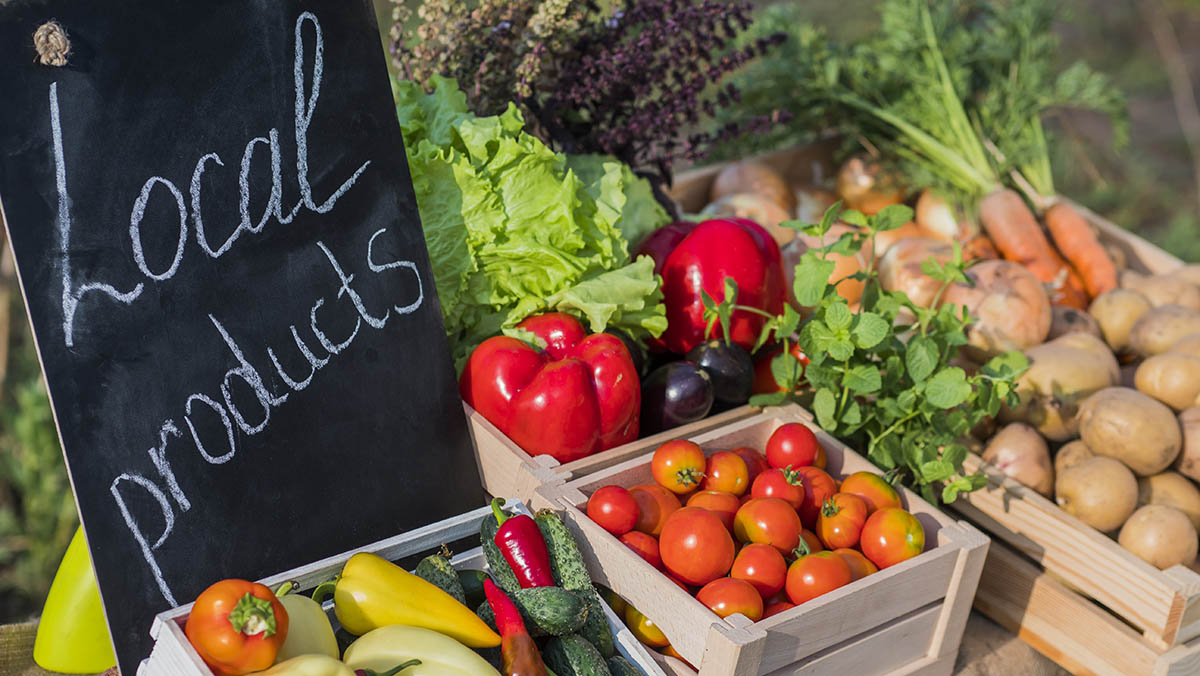
Plants are losing their nutrients. Global supply chain disruptions are delaying shipments, causing nutrients to deteriorate as foods spend more time away from their nutrient sources. It seems like the world is conspiring to keep you from consuming the nutrients you need. What can you do? These simple habits can help you maximize nutrients in your fruits and vegetables.
Buy local
It's time to hit the farmer's market. As soon as a fruit or vegetable is disconnected from its nutrient source — vine, tree, plant — it starts losing moisture and its nutrients begin to degrade. Produce can take up to a week in transit and 1–3 days on grocery store shelves before you bring them home. During that time in storage, transit, and display, temperature and humidity must be carefully controlled to prevent moisture loss and maintain nutrients. Buying local produce minimizes transit time, minimizing nutrient loss due to storage conditions and degradation that happens over time.
Don’t hoard
Chances are, you’re not an expert in food storage. And all the fruits and veggies co-mingling in an overstuffed produce drawer in the home fridge aren’t being stored at optimal temperature and humidity conditions. To retain the highest nutrient quantity, it’s best to eat fresh produce within a couple days of buying. Buying a giant bag of spinach may not be as good of a deal as other bulk purchases. Every time you open the bag, you expose the spinach to oxygen, which — you guessed it — oxidizes the leaves, destroying nutrients and decreasing its lifespan.
Store whole fruits and veggies in airtight containers
Since buying individual carrots is not an option, you'll still have to store some food for a short time in the fridge. Keep it intact. Cutting the produce exposes more surface area to oxygen, leaving less nutrient-dense area for consumption. Only peel fruits and vegetables right before eating, or don’t peel at all (when appropriate) as the skins are often the most nutrient-dense parts of the plant.
Eat seasonal fruits and vegetables
Peak taste often means peak nutritiousness. Analyses show that fruits and vegetables are at their most nutritious when they are in season.
Opt for frozen over canned
Produce that is to be frozen is usually harvested at peak ripeness, which is also peak nutritiousness. Vegetables, but not fruits, are quickly blanched (boiled in water for a short period) to retain flavor, color, and texture while killing harmful bacteria. Because hot water steals water-soluble nutrients, some Vitamin C and B vitamins are lost during the blanching process. While frozen, the nutrient levels remain stable.
Since canning exposes fruits and vegetables to high temperatures and the water of the canning medium, canned fruits and vegetables can lose up to 90% of their Vitamin C content. Once stored, they remain stable. Fat-soluble nutrients, like vitamins A and E, do not leach out into the canning or cooking liquid. Canned tomatoes, on the other hand, have higher lycopene content because heat releases this nutrient with cancer-fighting properties from its cellular matrix.1 Some research suggests that, even with this nutrient loss, frozen vegetables may retain their antioxidant capacity.
Try freeze-dried fruits
While it doesn’t beat fresh, freeze-drying appears to preserve nutrients better than standard dehydrating. Instead of using uses oxygen and high temperature that degrade nutrients, freeze-dying uses low temperatures under a vacuum. In a recent study, freeze dried guava retained 63% vitamin C as opposed to 25% in a fruit after drying by heat pump.2
When possible, buy from regenerative farms
All around the world, plants are losing their nutrients. Modern agricultural methods to increase crop yields interfere with soil health, supplying plants with fewer nutrients. Higher carbon dioxide in the air causes plants like wheat, rice, and potatoes to generate higher levels of carbohydrates. This means they draw in less water, which prevents higher absorption of minerals from the soil. This particularly affects levels of protein, B vitamins, iron, and zinc. Many scientists say organic isn’t going to be much better because those plants are exposed to the same carbon dioxide and, often, the same higher-yield farming practices that deplete the nutrients in the soil.
According to a recent article in National Geographic3 , numerous studies indicate regenerative farmed crops have higher nutrient content. This practice, still without an official definition, describes farms, often smaller and independent, that focus on maintaining and enhancing soil health. According to studies, spinach grown under regenerative methods has four times the phenolic compounds than standard New York City supermarket fare.
Per the National Geographic article: “Researchers studied cabbage, carrots, spinach, and soil from Singing Frogs Farm and discovered that the cabbage grown on the regenerative farm had 46 percent more vitamin K, 31 percent more vitamin E, 33 percent more vitamin B1, 60 percent more vitamin B3, and 23 percent more vitamin B5 than cabbage from the regularly tilled organic field. The cabbage also had more calcium, more potassium, more carotenoids, and more phytosterols.”

